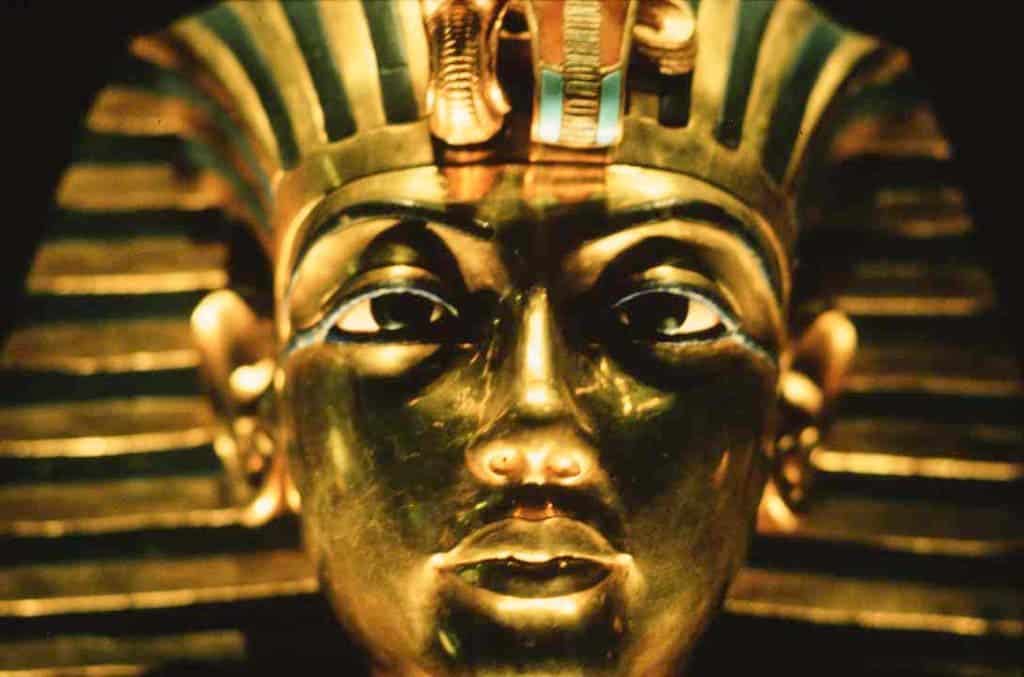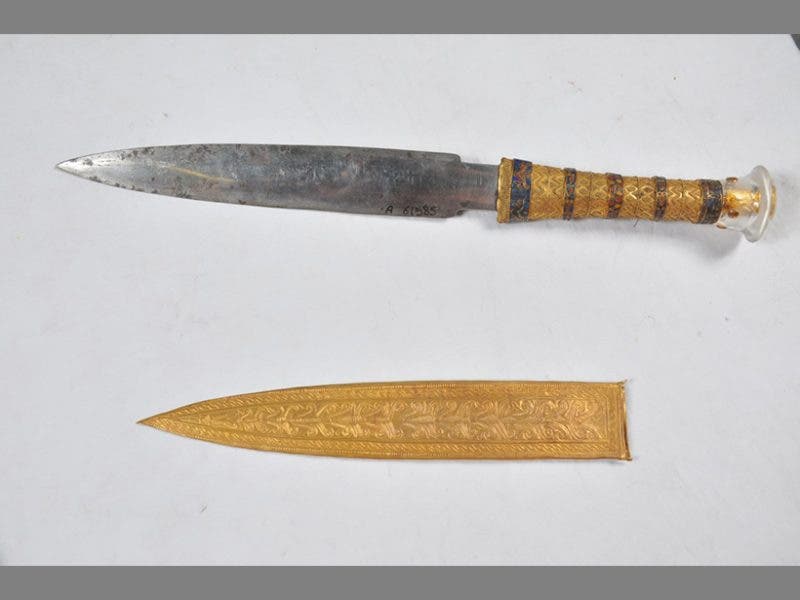Scientists have confirmed that the pharaoh’s dagger is indeed not from this Earth — the blade is the “iron of the sky.”

King Tut was one of the most revered and rich rulers the ancient world has seen. Even at his burial site, the pharaoh was surrounded by a veritable treasure trove, one that continues to surprise us to this day. Among his burial treasure, archaeologists found two beautiful daggers in the pharaoh’s linen wrappings: one of them had a gold blade, and the other one was made completely of iron. At a first glance, this seemed suspicious – why would Tutankhamun have a dagger from common iron? But a new study confirmed what many archaeologists already believed: this is no common iron, the dagger was crafted from a meteorite.
Now, researchers know that iron was extremely valuable in ancient Egypt – in some cases, even more so than gold. Because iron has a high melting point (1538°C), early smiths couldn’t heat ore enough to extract iron, nor could they forge the iron into weapons. In fact, iron weapons were mostly decorative, said Daniela Comelli, a materials scientist at the Polytechnic University of Milan, in Italy, who is the lead author of the new study of the dagger. Most weapons were crafted from bronze, because it was easier to extract and work with. But there was an alternative: meteorites.
Extraterrestrial bodies were hard to find, but not impossible to find in Egypt. Craftsmen couldn’t melt meteorites, but they could hammer them into beads or weapons, as is the case with Tut’s dagger.

In a new study published in the May issue of Meteoritics & Planetary Science, Comelli and her colleagues describe how they used a portable X-ray fluorescence machine to examine the dagger. They basically bombarded the dagger with X-rays and then looked at the radiation the metal emitted in response. They found that the dagger comprises of significant quantities of nickel and cobalt, matching well with the composition of 11 iron-bearing meteorites analyzed in the same way.
“No one ever really doubted the meteoritic origin of that dagger,” said Thilo Rehren, an archaeometallurgist at University College London, Qatar, in Doha, who was not involved with the study. “It was the logical thing to assume. The beauty of this [new] paper is that they’ve put it beyond doubt that this is meteoritic iron,” he added for EOS.
The finding is more significant than it seems at a first glance – it shows that the Egyptians still hadn’t mastered iron forging during Tutankhamun’s reign. Ancient Egypt was “rather slow to take up iron as the metal of choice,” said Rehren, since Egypt lacked both iron deposits and the forests to fire up the smelting. Understanding a culture’s metallurgical capabilities can tell us a great deal about their technological level.
Journal Reference: Deatrick, E. (2016), Pharaoh’s iron dagger made from a meteorite, study confirms, Eos, 97,doi:10.1029/2016EO053545. Published on 01 June 2016.
Was this helpful?



